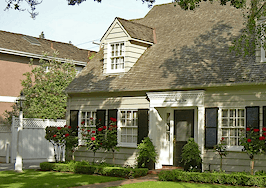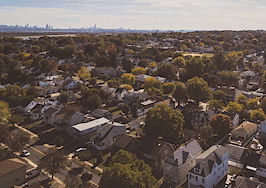On Monday First American released its latest Real House Price Index, which showed that real home prices increased 0.4 percentage points month-over-month and year-over-year in December. Furthermore, real house prices are 37.1 percent below the housing boom peak in July 2006.
Consumer house-buying power, which is how much one can buy based on changes in income and interest rates, also increased 0.1 percent month-over-month and 5.6 percent year-over-year, thanks to a 2.9 percentage point rise in average hourly earnings.

Source: First American
First American chief economist Mark Fleming says the impact of the uptick in wages is twofold. On one hand, wage growth means buyers will be able to borrow more, potentially giving a boost to the housing market. On the other hand, wage growth is expected to cause the Fed to increase rates at a faster pace, meaning that affordability will be weakened.
“The consensus among economists is that 30-year, fixed-rate mortgage rates will approach 5 percent by the end of the year,” said Fleming in a press release. “Rising interest rates increase borrowing costs for home buyers, thereby decreasing consumer house-buying power.”
“Wage growth simultaneously helped and hurt housing affordability,” he added. “However, rising household income has largely offset the increase in borrowing costs brought about by higher interest rates in the past year.”
“In December, consumer house-buying power was up 5.6 percent compared with a year before, even though mortgage rates increased in 2017.”

Source: First American
Fleming says wage growth and the uptick in mortgage rates won’t impact every market the same. Buyers in San Francisco, New York and Los Angeles won’t reap the benefits of wage growth since home prices are outpacing consumers’ house-buying power.
But in Washington, D.C., Boston and Denver, Fleming says buyers will come to find out they can afford more than they predicted.
“The fact is most of the markets we monitor in our Real House Price Index (RHPI) have more than enough house-buying power when compared to the average house prices in the market,” he said. “It’s important to remember that rising mortgage rates are often the result of positive economic conditions, like rising incomes and strong economic performance.”
“In 2018, home buyers may have to take the good, wage growth, with the bad, rising mortgage rates,” Fleming finished.
Other stats, straight from the report:
- “Consumer house-buying power, how much one can buy based on changes in income and interest rates, increased 0.1 percent between November and December 2017, and grew 5.6 percent year over year.
- The five states with the greatest year-over-year increase in the RHPI are: Delaware (+7.3 percent), Nevada (+7.0 percent), New York (+6.6 percent), New Hampshire (+5.8 percent) and Michigan (+4.2 percent).
- The five states with the greatest year-over-year decrease in the RHPI are: Arkansas (-5.3 percent), Maryland (-5.1 percent), Washington, D.C. (-3.7 percent), New Jersey (-3.2 percent) and Wyoming (-2.9 percent).
- Among the Core Based Statistical Areas (CBSAs) tracked by First American, the five markets with the greatest year-over-year increase in the RHPI are: San Jose, Calif. (+9.8 percent), Las Vegas (+9.1 percent), Columbus, Ohio (+8.8 percent), Seattle (+5.8 percent) and Philadelphia (+5.7 percent).
- Among the CBSAs tracked by First American, the five markets with the greatest year-over-year decrease in the RHPI are: Pittsburgh (-7.3 percent), Riverside, Calif. (-3.3 percent), Dallas (-2.9 percent), Memphis, Tenn. (-1.6 percent) and Cincinnati (-1.5 percent).”
Methodology
The First American Real House Price Index (RHPI) measures the price changes of single-family properties throughout the U.S. adjusted for the impact of income and interest rate changes on consumer house-buying power over time and across the United States at the national, state and metropolitan area level. Because the RHPI adjusts for house-buying power, it is also a measure of housing affordability.












